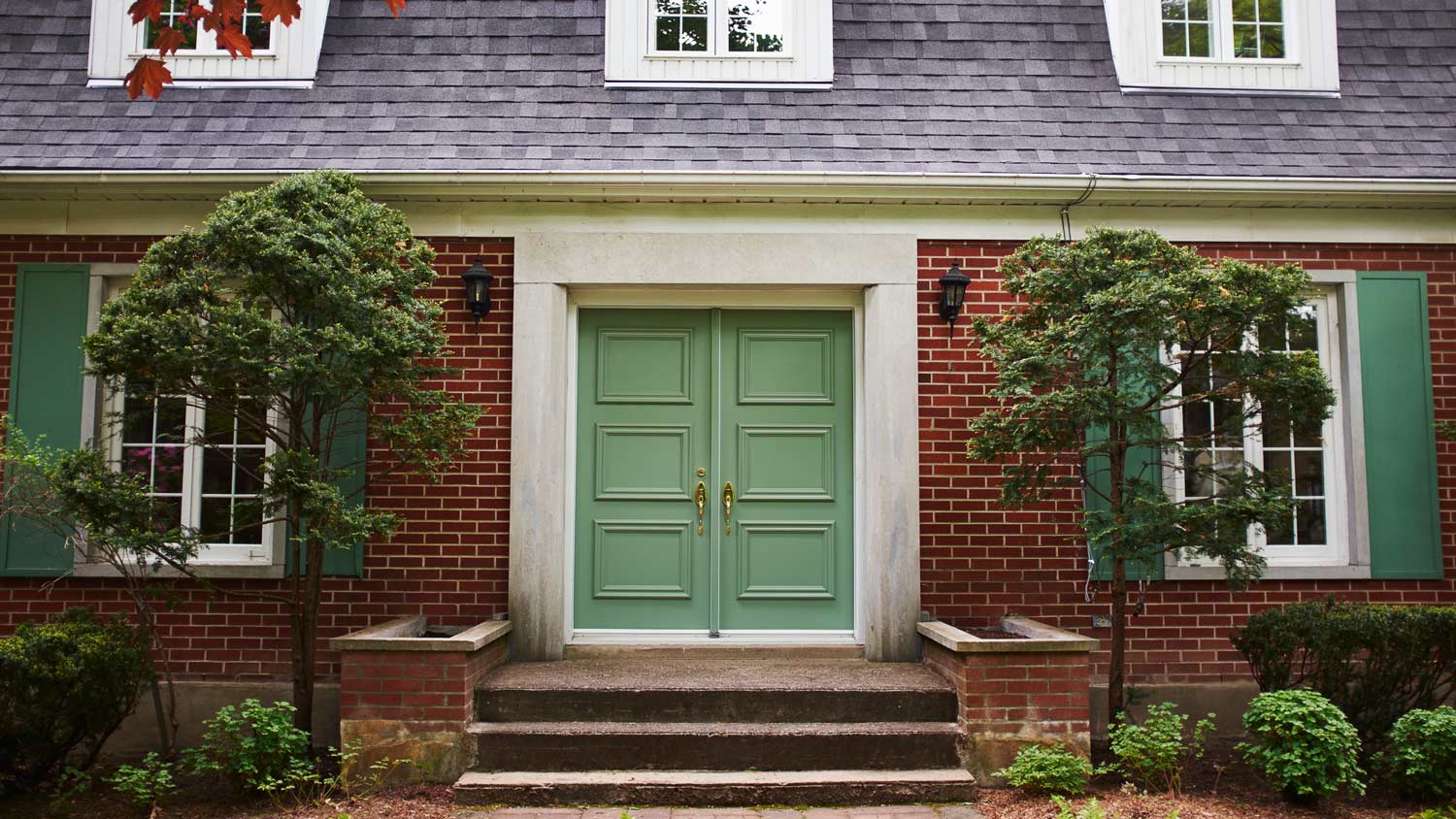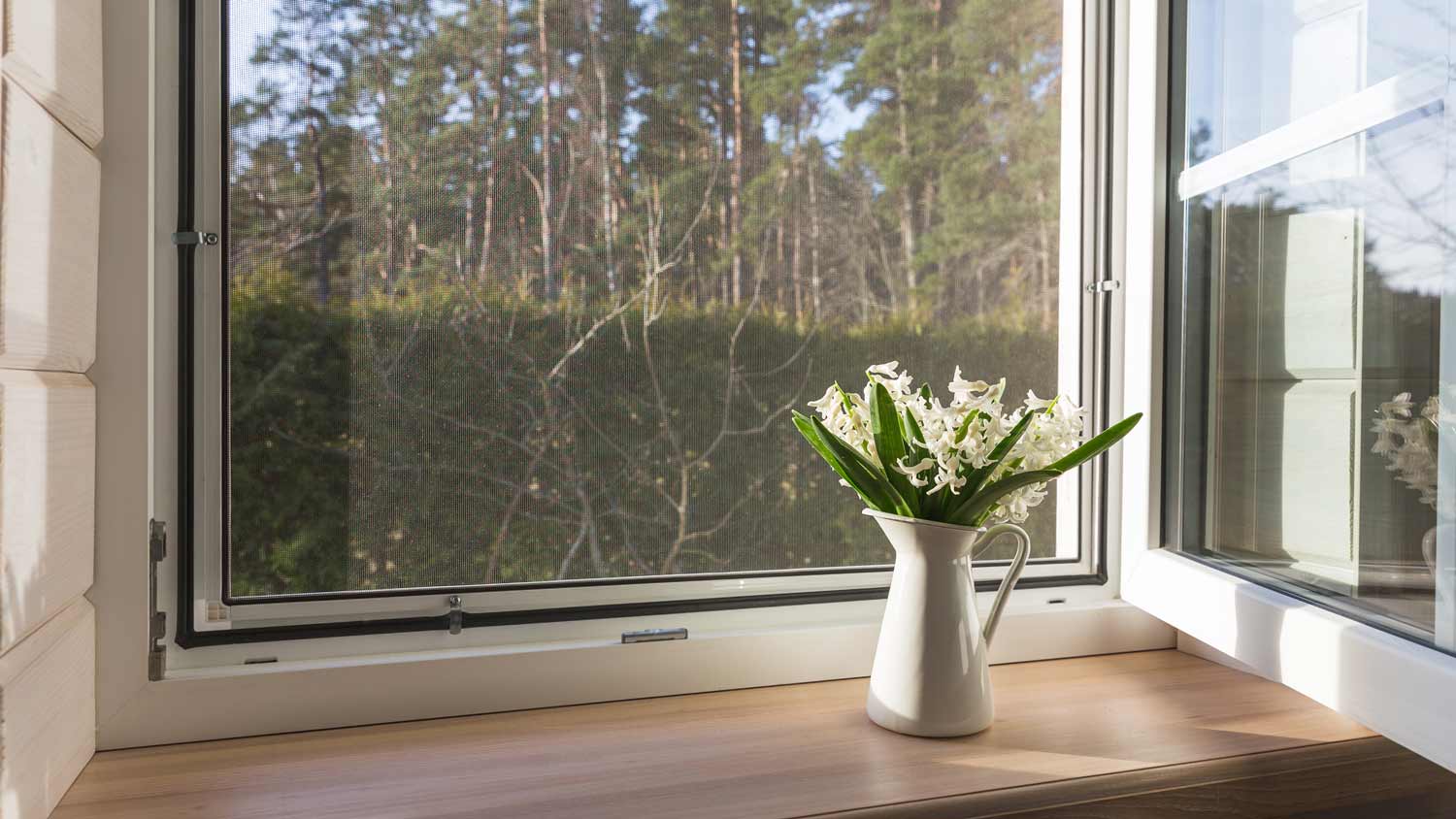5 Ways To Make Your Front Door Energy Efficient
Cut down on your annual energy bills by checking your entryway doors for damage, drafts, and signs that it's time for a new model


Do you find yourself frequently announcing, "Where is that draft coming from?" From worn-down weatherstripping to poorly aligned hinges, the culprit could be your front door. The U.S. Department of Energy confirms that an incorrectly installed door can lose significant heating and cooling energy each year. In other words, it's worth giving your front door a look to lower your energy bill.
How To Weatherproof Your Front Door
Depending on your home style, your front door—or other main entry doors—may be made of wood, steel, or even glass. Today you have the option to install insulated doors that come with similar protection as your walls, attics, and basements.
When checking your door for energy efficiency, start by feeling around its frame for a warm or cold draft, depending on the weather. You can also bring up the design of your door during a home energy audit from a local pro.
Once you determine the cause of the draft, here are five main steps to protect your home from energy loss.
1. Replace the Weatherstripping
The edge of your entryway doors has a layer of either rubber, vinyl, or metal stripping. The layer protects air, water, dirt, and debris from flying into your home. It also plays a large role in preventing hot or cool air from changing the temperature of your home.
Weatherstripping wears down over time and can easily lead to poor performance. Rubber weatherstripping tape only costs between $8 and $15, but metal barriers and professional installation can run a bit higher.
Rubber weatherstripping is a relatively easy DIY project which adheres with an included adhesive. For a longer-term fix, call in the help of a contractor to help install the metal or vinyl stripping that often has a trickier fastening.
2. Install a Storm Door
Do you have a screen door outside your major entryway? When the temperatures fall in the winter, replace your screens with a glass storm door to keep out drafts. Even with your door closed and secure, a storm door offers an extra layer of protection during an extreme cold snap.
3. Repair Your Door
A busy family coming and going all week means that your door sees a lot of wear and tear over time. After several years, a door can slowly adjust off its hinges, leaving small gaps around the frame. Even if you have a well-installed door, houses settle over time—particularly newer ones—causing gaps as well.
If you suspect a problem with your connection between the door and your home, call a local front door repair specialist to take a look. They can also check out the caulking around its edges, which can also break down over time.
4. Add Curtains to Glass Doors
Large windows on your door—or doors entirely made of glass—can significantly affect the temperature of your home in both seasons. Install curtains or long drapes to either let in the sunlight or keep it out. Open them up in the winter to let in the hot sun or close them up during the peak of a summer afternoon to hold in the AC.
5. Replace Your Front Door

In the most extreme cases, consider installing a new, more energy-efficient front door. This step is often only necessary if your current door is beyond repair and too old to hold in the heat.
When you upgrade your door, you'll encounter two technical terms: the U-factor and the R-value. While they may sound like something from your high school algebra class, the terms dictate how a door, window, or skylight holds in heat.
The U-factor ranges from zero to one. The lower the number, the better the door holds temperatures inside your home. Insulated vinyl and steel doors are the norm these days and come with a rating of either R-4, R-5, or R-6. In this case, the higher the number, the better its insulating power.
If you opt for a glass door, choose a model with a low-emissivity coating (Low-E coating) for between 30% and 50% more energy efficiency.
While you can install doors yourself, it’s usually best to opt for a professional's help if you have to replace the whole door frame. Materials and labor to install a new door can cost between $475 and $1,560, but the long-term investment of a strong new door pays off in decades of energy savings.





- How to Fix a Gap Between a Storm Door and Frame to Seal Your Home
- How to Insulate a Door
- Why Water is Leaking Through Your Sliding Glass Door and How to Stop It
- How to Measure for a Storm Door to Get the Perfect Fit
- Do I Need a Storm Door? What to Consider
- How to Fix a Door That Sticks: 5 Different Methods
- Exploring the Different Parts of a Storm Door and Their Functions
- 4 Types of Storm Doors and How to Choose the Best One
- Open Up the Possibilities: 5 Must-Know Tips for Choosing the Perfect Front Door
- 9 Tips to Make Installing a Pocket Door in Your Home Easy










